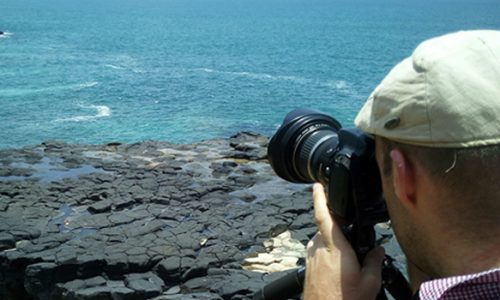BASIC FACTS ABOUT HISTORY
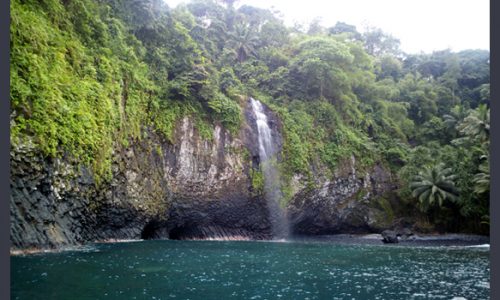
Uninhabited until 1471
São Tomé was discovered on December 21th, 1471, by Portuguese explorers João de Santarém and Pêro Escobar. Until then it was completely uninhabited. Portuguese government decided to start the first settlement in 1493 and exiled « undesirable » people from Portugal to inhabit the newly discovered island. In this « human » shipment, more than two thousand Jewish children were deported, as well as Portuguese Christians sent along. The first city was built in the North of the island (near actual Neves) but was later moved to the actual location of São Tomé, because of a high death rate caused by malaria.
Transport hub and sugar cane plantations
At the time of « triangular trade », São Tomé became a hub for shimpent supplies with fresh water and food. Among this time, Portuguese introduced all sorts of vegetables and fruits in order to diversify the supply of fresh food.
Meanwhile, the production of sugar launched, and São Tomé became a quite famous sugar cane producer.
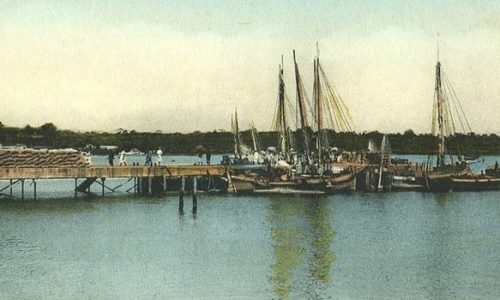
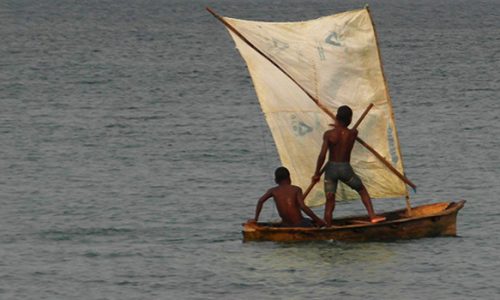
King Amador’s revolt
While most of Africans living in the island were enslaved and working in the plantations, there was an independent fishermen village, located in what is now know as the city of São João das Angolares. Among the most popular stories, it is said that the village was founded by salves who survived the destruction of their ship, few kilometers away from the coast. They managed to escape and swim to the Bay of Angolares and established there a « free » community. In 1595 they gathered around King Amador, rallied enslaved people, and attacked the Portuguese. They ruled the island for about a year and then King Amador was captured, en-jailed and executed by the Portuguese. Nowadays, King Amador is still a strong symbol of independence for Santomean people.
Coffee and cocoa beans
After the slow decline of sugar cane due to fierce competition from other countries, agricultural production was put to sleep, until the early 18th century, when Cocoa and Coffee plantations were introduced. The mild weather, with heavy rains, in conjunction with the greatly fertile land enabled São Tomé to become the world first producer of cocoa beans in 1908, with more than 36.000 tons of exported dry cocoa beans.
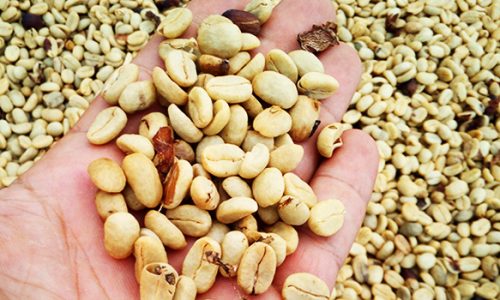
BASIC FACTS ABOUT GEOGRAPHY
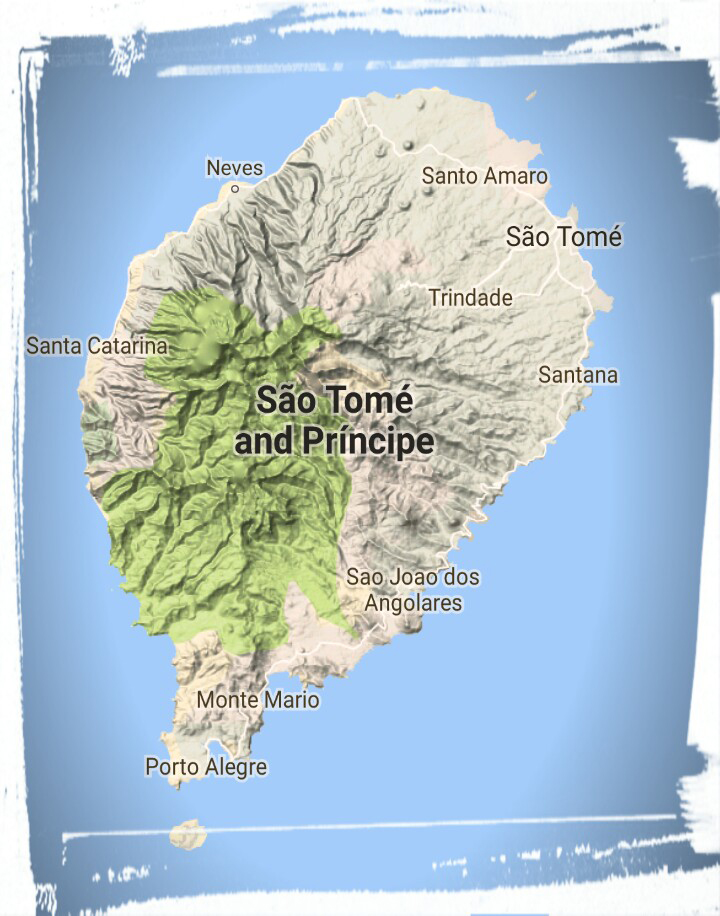
Geographic formation : São Tomé and Principe island are volcano islands which are part of the Cameroon mountain chain. The country total area is 1001 square kilometers, : São Tomé Island covers 859 km2 and Principe Island 142 km2.
The Obô National Park covers about one third, with a surface of 295 km2 and the highest point is the Sao Tome Peak with 2024 m high. There are some volcano craters, such as the famous Lagoa Amelia, now covered with green lichens. There are also some natural curiosities, such as the Cão Grande Peak (the Big Dog), and the Boca de Inferno (Hell’s mouth).
The geography is diversified with savanna and baobabs in the North (between Guadalupe and Neves), and a tropical mountainous vegetation in the southern part. In the North West, you will find black sand and pebble beaches (Neves to Santa Catarina), and in the other areas you will either find yellow, gold, or white color sand.
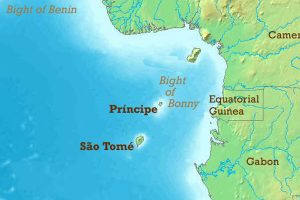
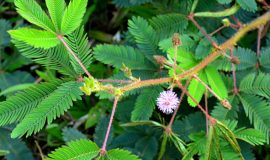
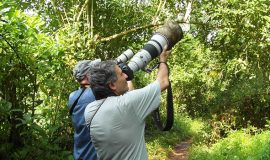
ENDEMIC FAUNA AND FLORA
Since the island has been detached from the Continent for a very long time, many species (fauna and flora) have developed on their own and became « endemic », they are not to be found anywhere else on earth.
Sao Tome is a resource paradise for botanists, entomologists and bird-watchers. Delegations come once in a while and always meet with unknown species of insects.
Flora : there are also many endemic flowers and plants, some of them are decorative, and some others are used in medecine. It is said that some tree preparation works as an aphrodisiac for women ; if you are curious about it, you can ask the specialized guide during the botanical garden visit.
Fauna : most existing species have been brought by human activity (dogs, sheeps, monkeys, chicken etc). There is only one dangerous snake specie on the island, but it is rarely seen. Unless you go for a hike in the mountain, there is very little chance that you meet it.
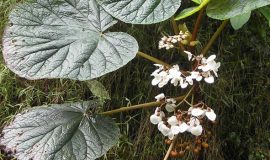
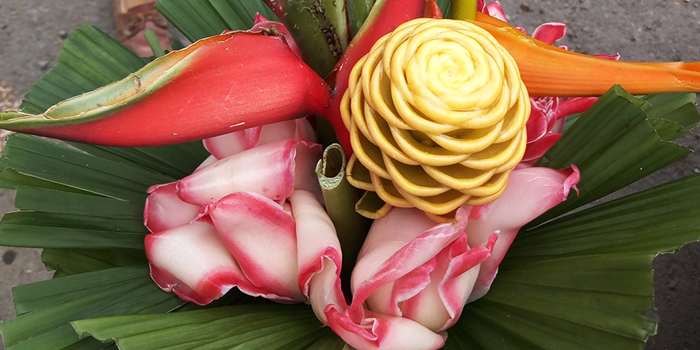
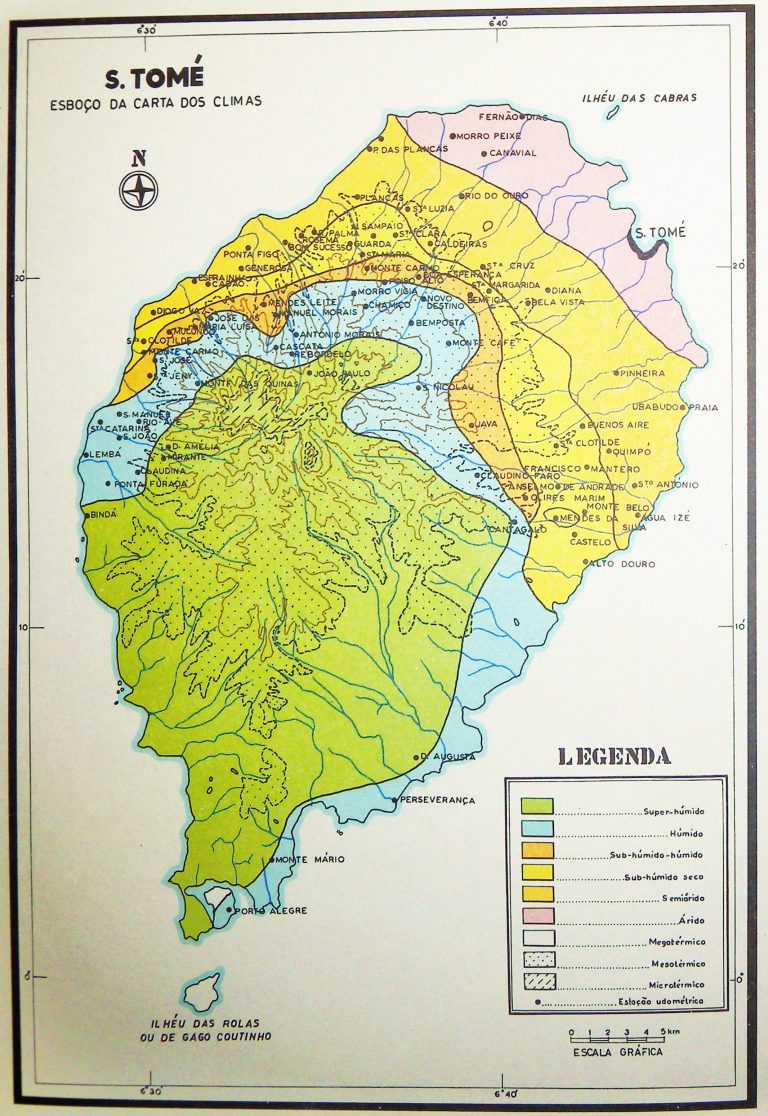
BASIC FACTS ABOUT CLIMATE
Generally speaking,São Tomé has two seasons, divided into four rhythms:
-Long rainy season: February to June (Epoca das chuvas)
-Dry season: July and August (Gravana)
-Shorter rainy season: September to November (Epoca das chuvas)
-Light dry season: December and January (Gravaninha)
Climate categories:
While climatologists will be make very precise distinctions (see map aside), we can simplify and divide into four major categories of climate regions.
-Coastal areas Fresh breeze, weather can change rapidly
-Mountains areas High humidity, light or heavy rains
-Northern areas Dry climate (savanna) in coastal areas
-Southern areas Tropical weather, luxurious forests
About the rain :
-The North has about 2000 mm of annual rains.
-The South has about 7000 mm of annual rains
ABOUT THE TEMPERATURES
Some essential facts about São Tomé's temperature explains why this beautiful island can be considered as a "Little Paradise" in the Gulf of Guinea.
- Temperatures are very mild compared to other Central African countries.
- The average temperature vary from 21° to 25° Celsius.
- The coldest month is July, and the warmest month is October
- Due to ocean's winds, the humidity rate is much lower than in other Central African countries..
Nota : see the diagram aside to better understand the correlation between temperature and rainfall, thus distinguishing the 4 rhythms of the 2 seasons..
Nota2: you can see that the diagram indicates average rainfalls and temperature, and does not make any distinction between the northern and southern regions of São Tomé.
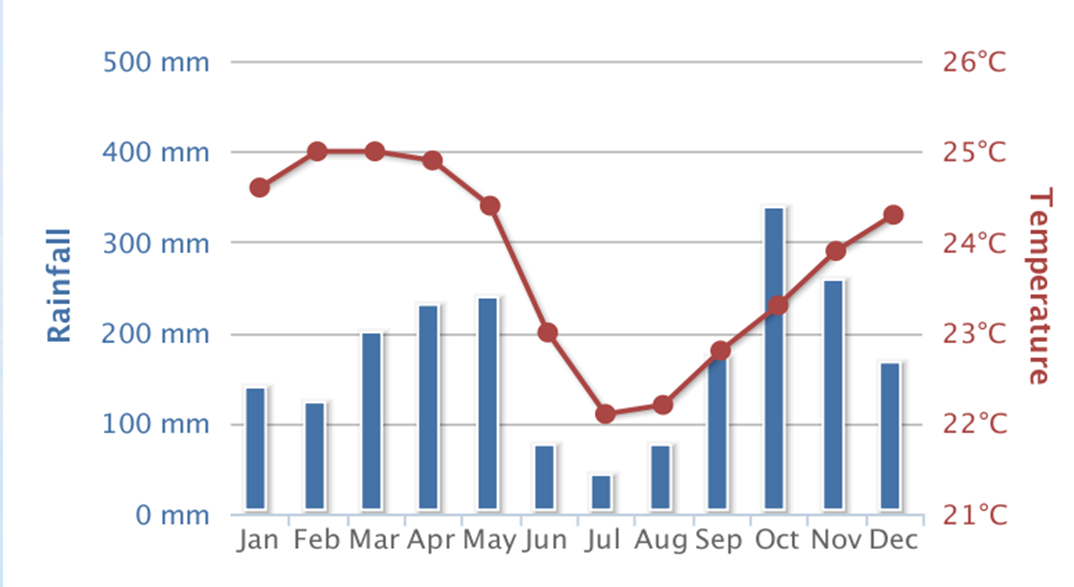
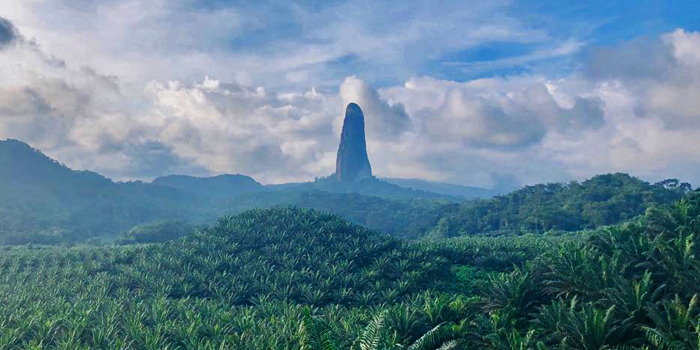
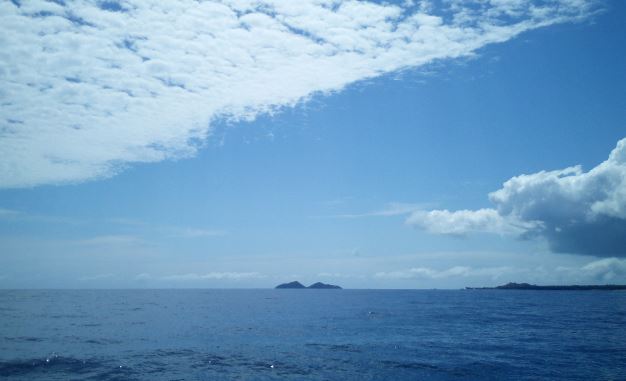
ABOUT THE WIND
Generally speaking, the main wind stream is coming from the southwest and is blocked by the central mountains.
This explain the reason why the North is more dry, and the south more humid. Clouds gathering are located in the central and mountainous part of the island, thus explaining why rain is more likely to happen there.
Depending on the season, the wind may blow more or less (can be strong in February and March, beware if you go camping), and can make surfers and wind-surfers happy !
Unlike the neighboring countries, located on the Continent, it is possible to sleep without using air conditioned or fan all year long. For this exceptional situation, we can be grateful to the permanent fresh breeze of the ocean...
If you have been living in Africa for a long time, you will feel that São Tomé's weather is alike Europe's mild weather.
WHEN IS BEST TO TRAVEL IN SAO TOME ?
Generally speaking, you can travel anywhere in the island, at any moment of the year. You can drive a motorcycle in the North, but we highly recommend driving a car when going in the center or in the south of the island.
If you like difficult treks (São Tomé peak, or Santa Catarina Trek) , we recommend to undertake it during the dry seasons.
In the Northern part of the island, the sky is usually covered with grey cloud layer during the dry season (good to avoid sunburns..) and during the rainy seasons, it does alternate with some rain and quite often blue sky.
In the South, the old saying « « after rain comes sunshine » is very true. Do not forget to bring a light rain coat, or an umbrella, and some extra clothes.
